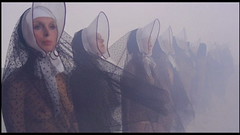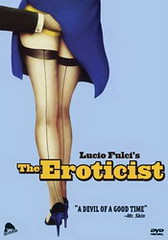[Youtube=http://www.youtube.com/watch?v=kt24h_Ia2UA]
L’Abécédaire de Gilles Deleuze (recorded in 1988, first broadcast in 1996)
An abecedarium is a a means to learn the alphabet. It is also used to denote an A to Z of a certain subject. Such as David Toop‘s A to Z of Dub and A to Z of Electro, and Gilles Deleuze’s A to Z of his thought, as interviewed (for seven and a half hours) by Claire Parnet.
On W, Wittgenstein, Deleuze says:
- « Pour moi c’est une catastrophe philosophique […] c’est une régression massive de toute la philosophie […] S’ils l’emportent, alors là il y aura un assassinat de la philosophie s’ils l’emportent. C’est des assassins de la philosophie. Il faut une grande vigilance. »
In English:
- « ‘a philosophical catastrophe’, a ‘massive regression’ of all philosophy »
Update: A summary to be found online says:
Parnet says, let’s move on to W, and Deleuze says, there’s nothing in W, and Parnet says, yes, there’s Wittgenstein. She knows he’s nothing for Deleuze, but it’s only a word. Deleuze says, he doesn’t like to talk about that… It’s a philosophical catastrophe. It’s the very type of a “school”, a regression of all philosophy, a massive regression. Deleuze considers the Wittgenstein matter to be quite sad. They imposed <ils ont foutu> a system of terror in which, under the pretext of doing something new, it’s poverty introduced as grandeur. Deleuze says there isn’t a word to express this kind of danger, but that this danger is one that recurs, that it’s not the first time that it has arrived. It’s serious especially since he considers the Wittgensteinians to be nasty <méchants> and destructive <ils cassent tout>. So in this, there could be an assassination of philosophy, Deleuze says, they are assassins of philosophy, and because of that, one must remain very vigilant. <Deleuze laughs>



